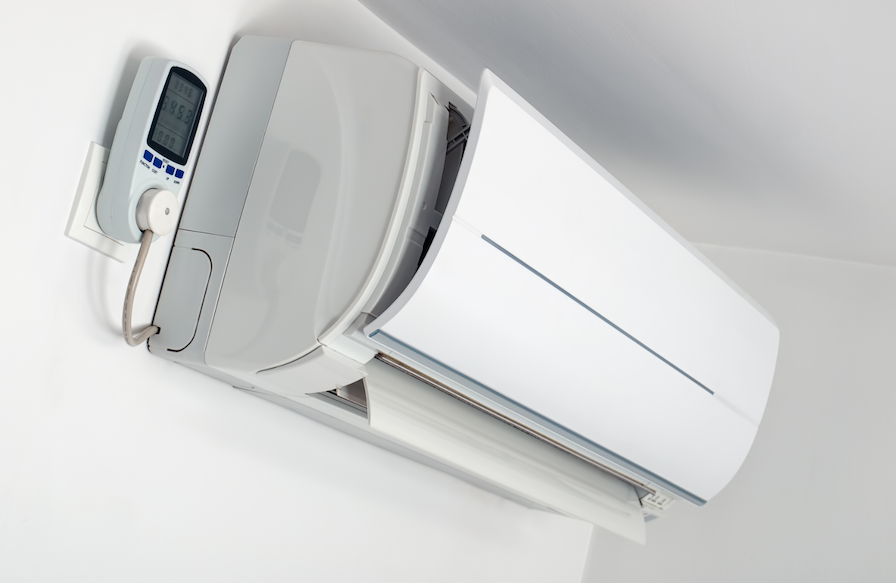Need a New AC? What You Need to Know to Choose Wisely
August 18, 2022

If you’re in need of a new air conditioner for your Phoenix home, it can be hard to know where to start. Fortunately, choosing a new air conditioner is more straightforward than purchasing most consumer goods.
Whether you’re moving into a new home or simply need to replace your old unit, it’s important to do your research. The age and square footage of your home will primarily influence your choice of AC. Let us kick-off your research right by outlining the more important elements to consider when choosing an AC unit.
How Many Rooms Do You Have?
The larger and more horsepower an AC has, the larger the home that it’s designed to cool.
Three types of professional AC units are window, wall-mounted and central units. Hence their names, window and wall-mounted units are installed along their respective locations. These are small units designed to cool small homes consisting of four rooms or less. Fortunately, the costs that come with maintaining a wall or window AC are more affordable compared to central units.
Central AC units refer to larger systems that sit outside the home. These machines provide cooling to five or more rooms with a ventilation system and can even extend to the second floor. A large home requires a central AC unit, as a wall or window AC will only cool the area immediately surrounding it.
How Many Square Feet Do You Have?
After deciding which kind of AC unit your Arizona home needs, then you need to determine the size of your home in square feet. Matching the square-footage of your home with the appropriate power is important to get the best value for your AC over time. If you choose an AC unit without enough power to cool your space, it will work extra hard and wear out faster. AC units that are too large can result in the unit shutting off prematurely. In either scenario, more wear and tear cause costly repairs and premature replacement.
The horsepower for all three AC unit types are measured by British Thermal Units (BTUs). We have provided a list of house sizes with corresponding BTU recommendations to help you determine how much power your space needs:
- 150 – 250 sq. ft: 6,000 BTUs
- 250 to 300 sq. ft: 7,000 BTUs
- 300 to 350 sq. ft: 8,000 BTUs
- 350 to 400 sq. ft:: 9,000 BTUs
- 400 to 450 sq. ft: 10,000 BTUs
- 450 to 550 sq. ft:: 12,000 BTUs
- 550 to 700 sq. ft: 14,000 BTUs
- 700 to 1,000 sq. ft: 18,000 BTUs
- 1,000 to 1,200 sq. ft: 21,000 BTUs
- 1,200 to 1,400 sq. ft: 23,000 BTUs
- 1,400 to 1,500 sq. ft: 23,000 BTUs
- 1,500 to 2,000 sq. ft:: 30,000 BTUs
- 2,000 to 2,500 sq. ft: 34,000 BTUs
Other House Factors to Consider
In Arizona, home builders and homeowners might have already prepared a home for sweltering hot summers besides installing an AC. This includes having the home face north or west (away from the sun’s daily ecliptic), using thick materials for insulation, and providing the home with outdoor landscaping and amenities to give it more cooling shade.
Many of these factors can influence the type of AC you need, but it can be harder to gauge the size of AC unit your home needs based on these additional variables. Thankfully, you can have an AC expert from Patrick Riley evaluate your home to determine the best unit for it given the house’s size and pre-existing features.
If you’re in need of a new air conditioner, don’t hesitate to contact or call Patrick Riley in the Greater Phoenix area! We offer quality, friendly service from our excellent technicians throughout Maricopa County. Schedule an appointment today to get started on installing the right AC for your property.
Get 10% off (Up to $150)

Ty Lindsay is the Director of Field Operations at Patrick Riley | Isley’s and a 15-year veteran of the plumbing and HVAC trades. In 2010, Ty earned his Journeyman’s plumbing license. He became a Master Plumber five years later and earned his Journeyman HVAC technician’s license that same year. Ty’s breadth of knowledge in plumbing and HVAC includes both residential and commercial work. He’s been a loyal member of the Patrick Riley | Isley’s team since 2016.
- Posted in:
- Buyer's Guide
